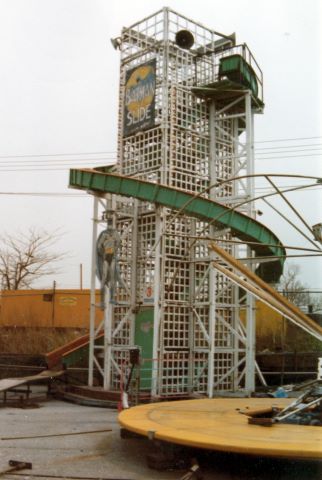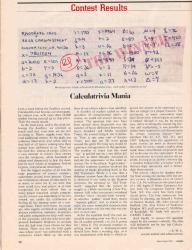I had a nasty shock a few minutes ago when I found an item online saying Pittsburgh restaurateur Joe Costanzo had drowned in a boating mishap on the Ohio River.
O cruel fate! To go in a few short years from the top of his profession to a failed run for local office to jail time on charges of tax evasion and finally to a watery grave.
But as I read the news item about the drowning victim, I became confused. It said he was 38 years old, two years younger than me. There’s no way he was 19 when I first dined in his award-winning restaurant, The Primadonna, in 1987. After quite a bit of clicking around to sort it out, I discovered that the victim was a different Pittsburgh restaurateur named Joe Costanzo.
I had been hunting for news about “my” Joe Costanzo when I ran across the drowning story. The last I heard of him, he had pleaded guilty to tax evasion and was facing some jail time. Apparently he’d cooked the books of his restaurant in order to cover the expenses of his failed candidacy for some local office. He’d been forced to sell The Primadonna and then had been pinched for the crime.
I was a great Joe Costanzo fan. I still am. His crime might have spoiled it for me, but around the time of his guilty plea he issued a public mea culpa that took full responsibility and expressed genuine regret. It’s too bad that such a thing is as rare and noteworthy as it is, but with it he retained my respect.
Here’s a letter I sent to him in happier times — July 1999.
Mr. Joseph Costanzo, Jr.
The Primadonna Restaurant
801 Broadway Avenue
McKees Rocks, PA 15136
Dear Mr. Costanzo,
Some of what you’re about to read I told you in person last week when I and several friends dined at your restaurant. But I felt it appropriate to tell you again in a more tangible and thorough form.
In the late 1980’s I had just graduated from Carnegie Mellon and had begun my professional career working for the university. Eager to spend my new salary, I seized upon an early glowing newspaper review of The Primadonna. Not knowing exactly where McKees Rocks was, and having no idea how to find Broadway Avenue once I got there, I nevertheless hopped in my car with a sense of adventure and eventually made my way to the finest Italian meal I’d ever had.
Now, that’s no idle boast. Before coming to Pittsburgh for college, I lived in New York City, home to numerous authentic Italian restaurants, and I enjoyed lots of them. Indeed, good Italian food was one of several things I missed about New York when I moved to Pittsburgh. But finding The Primadonna did more than fill a void — for me, it raised the bar.
For a few short years, I was a frequent visitor to your establishment, and I took pleasure in introducing dozens of different friends and relatives to your superb cuisine and unequaled hospitality. Then, alas, in 1992 I took a job in the San Francisco area.
Last week was my first visit to Pittsburgh in seven years, and I made a beeline for The Primadonna. For in those seven years, despite San Francisco’s (otherwise well-deserved) reputation for being home to many of the world’s best restaurants, an exhaustive search failed to turn up even one Italian eatery that offered the faintest shadow of Primadonna’s wonderful hearty food and jovial atmosphere. Everything’s either a pizza joint, or nouvelle, or pretentious, or — worst of all — all three.
(The closest I came in my search was three hours from San Francisco. North Lake Tahoe has a family-owned restaurant called Lanza’s that is hearty and jovial, though not nearly as accomplished in the kitchen as your talented staff.)
To tell the truth, I was a little nervous last week on arriving at The Primadonna for the first time in so long. After treasuring my Primadonna memories for seven years, and after seven years of anticipating another meal there, how could it possibly live up to my expectations? But I needn’t have worried. Everything was fantastic — just the way I remembered, if not better.
After my meal, I shook your hand and told you some of what you’ve just read. Although by now you must be well-accustomed to lavish praise of your restaurant, you seemed genuinely moved by my testimonial. You remembered me from those early days and thanked me with a bottle of salad dressing. Thanks for that touching gesture, but more importantly, thanks for the wonderful times I’ve had at The Primadonna and the ones still to come.
I was pleased to see that your business is thriving and wish you unending success. It won’t be seven years before my next visit to Pittsburgh, and you can be sure that The Primadonna again will be my first stop.
Affectionately,
Bob Glickstein
 Of course I’ve long outgrown most of that, but to this day there is still a model of the Enterprise-A on my desk. It’s the most beautiful of all sci-fi spaceships.
Of course I’ve long outgrown most of that, but to this day there is still a model of the Enterprise-A on my desk. It’s the most beautiful of all sci-fi spaceships. I went to elementary school at P.S. 196 in
I went to elementary school at P.S. 196 in  While Amy’s show was on the air, I attended
While Amy’s show was on the air, I attended 




